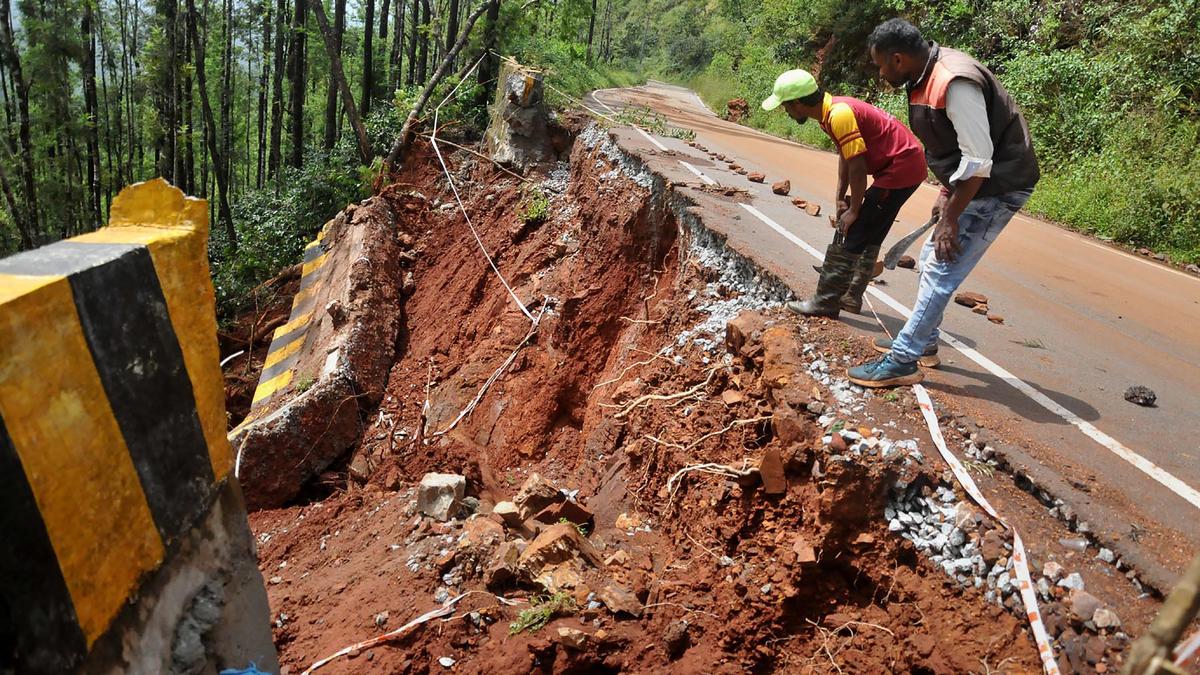
Landslips in Chikkamagaluru: GSI geologists say indiscriminate road construction can make slopes susceptible
The Hindu
Geological Survey of India experts warn of landslips in Chikkamagaluru, recommend slope management and drainage to prevent disasters.
Experts from the Geological Survey of India reported that slopes in Mullayyanagiri, Bababudangiri, and Charmadi Ghat in the Chikkamagaluru district are susceptible to landslips. The GSI has submitted a report after studying slope stability at different locations in the district and recommended measures to avoid landslips in the future.
The district administration had sought expert opinion from the GSI to handle the situation in case of landslips. A team of experts from GSI visited the locations in Chikkamagaluru, Kalasa, Sringeri, Mudigere, and Koppa taluks on August 10 and 12. They studied the locations and made observations about the causes of landslips. The report, titled the “Preliminary Assessment of Landslides in Parts of Chikkamagaluru District” was submitted to the district administration recently. It was prepared by Senthil Kumar K. and Sovesh Dulal Muduli, senior geologists under the supervision of Dr. R. Sajeev, Director.
The report, the experts submitted, stated that the geomorphology of the region includes both low to highly-dissected hill slopes and pediplain areas (flat rock surface). As per the National Landslide Susceptibility Mapping Programme (NLSM), 4.6% of the area in the district is highly susceptible to landslips. As much as 20.92 % of the area is moderately susceptible, and 74.47% of the area is low susceptible. The majority of the landslips occurred in moderate and highly susceptible locations that include slopes at Mullayyanagiri, Bababudangiri, and Charmadi Ghat sections.
The experts found heavy rainfall is the common trigger for landslips. Besides that, they noticed several geoscientific factors for the landslips, which include highly jointed and weathered Banded Iron Formations (BIF). “When fractured rocks are saturated with water, they become prone to sliding,” they noted. Human activity, such as road construction, is one of the major causes of landslips.
“Road cutting, particularly without adequate support structures, undermines slope stability,” the experts noted. One of the major reasons for the landslips in Charmadi Ghat (NH-73) was steep cuts without sufficient reinforcement or drainage systems. Similarly at Sri Guru Dattatreya Swamy Bababudan Dargah, the experts said, landslips occurred due to road construction on a steep slope that lacked adequate support.
The report recommended careful slope management, proper drainage installation, and the use of stabilising structures to mitigate landslips in the future. The drains should be placed such that both run-off and seepage water are intercepted to prevent slope saturation. They suggested erosion-preventive structures at river banks, streams, and also adjacent to major roads. They also suggested traffic management at vulnerable places during rainfall to minimise the damage.

After a long, tiring day all we want is to jump right on our cosy beds and rest comfortably on our soft, fluffy pillows, right? Pillows are not quite appreciated as much as electric cars or air-fryers, for instance. Pillows are a wonderful man-made creation that has improved the lives and sleep of people across the globe. Did you know ages ago people used to rest their heads on a HARD ROCK? So how did humans go from sleeping on stones to cosy, fluffy and soft pillows today? Let’s get into the origin of your everyday pillows!










